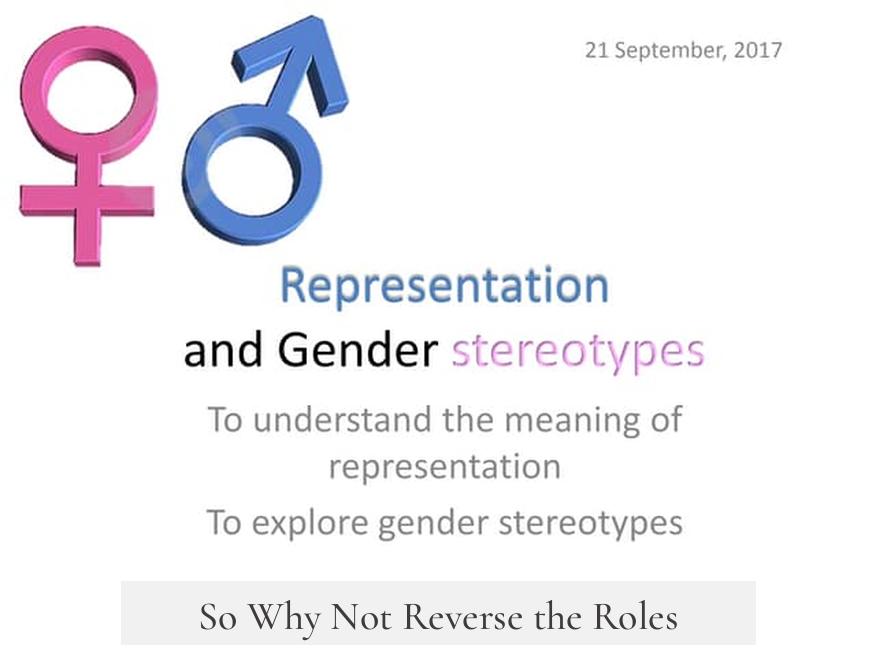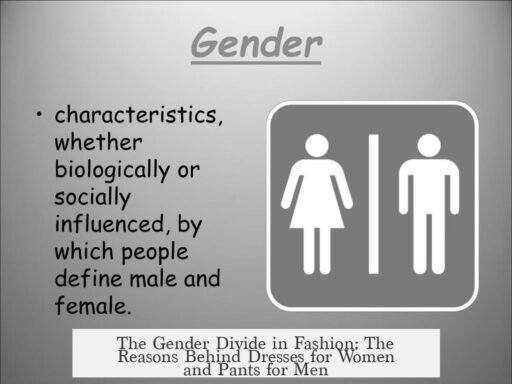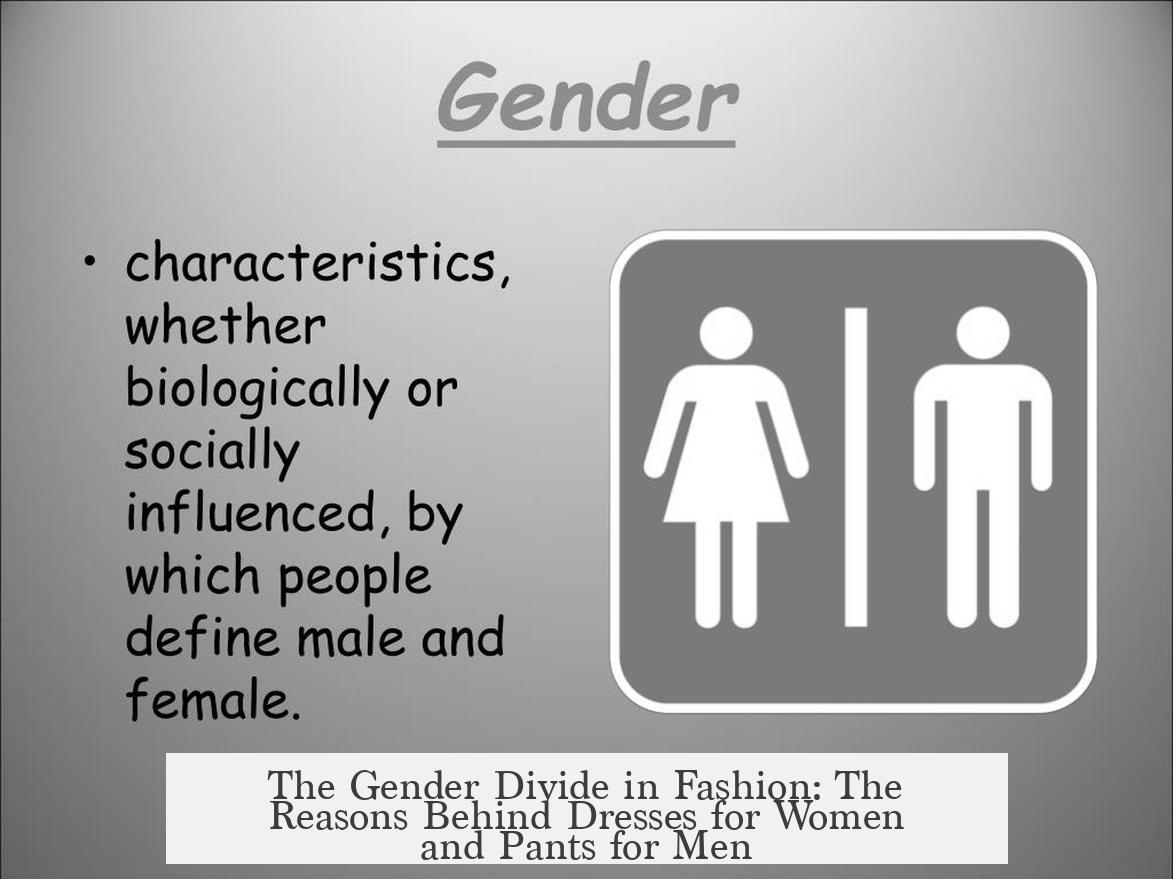Women wear dresses and men wear pants largely due to historical, practical, and cultural reasons deeply rooted in tradition and gender norms.
Historically, religious rules forbade cross-dressing but did not specify pants or skirts, as pants were not common in ancient times. These religious restrictions targeted the mixing of male and female clothing styles rather than specific garment types. The distinction between men’s pants and women’s skirts developed later with practical and social influences.
Practically, women’s adoption of pants began only in the mid-20th century, linked to advances in sanitary technologies. Before modern menstrual products, women wore bulkier, less fitted garments like large rags or rubber undergarments that made wearing pants uncomfortable and impractical. Tight pants would have revealed these, making skirts a better choice for coverage and comfort.
Men’s transition from skirts or tunics to pants relates to hygiene, convenience, and specific activities. Historically, male children wore skirt-like garments until about age five to ease diaper changes and bathroom use. Bifurcated garments like pants became standard for men partly because of horseback riding, which requires straddling a horse. Pants provide more protection and practicality for such tasks.
Cultural traditions around modesty further explain why women wear skirts or dresses. In the 19th century, dress reformers pushed for women’s bifurcated garments, but many opposed them as immodest. It was considered improper for women to display their legs separately. Skirts concealed a woman’s legs, aligning with cultural norms about female modesty and body exposure. Men’s clothing, on the other hand, evolved without such restrictions.
Even when men wore robes or tunics, these were often shortened versions of women’s longer garments. The idea of hiding the female form with long skirts fits into broader traditions of modesty and social expectations. Women’s clothing thus became more about concealing their legs, while men’s pants reinforced mobility and practicality.
- Religious rules target cross-dressing, not pants vs. skirts.
- Women’s pants adoption tied to advances in menstrual products and comfort.
- Men’s pants linked to practicality, like horseback riding and hygiene.
- Modesty norms made women’s leg-revealing pants socially unacceptable for a long time.
- Cultural tradition keeps skirts as women’s typical garment and pants as men’s.
Why Do Women Wear Dresses and Men Wear Pants Instead of the Other Way Around?

In short: women wear dresses and men wear pants largely due to a mix of historical customs, practical needs, and cultural notions of modesty that still linger today. Curious why this is the norm and not reversed? Let’s unravel the weave of history, sanitation, and modesty that ties this curious fashion tale together.
First, it’s easy to assume that men’s pants and women’s dresses are just random choices, but they actually have deep roots—stretching back to ancient times when clothing choices were tied to religious and societal rules. However, these rules were mainly about avoiding cross-dressing, not about dictating skirts versus pants.
Let’s Talk About Ancient Rules… And Where They Don’t Explain Much
In many early societies, religious guidelines prohibited men and women from swapping clothes. But these rules centered on the concept of “cross-dressing,” which in those times meant wearing garments typical of the opposite gender. Pants didn’t exist back then, so these edicts didn’t specify skirt or pants styles. They simply reinforced that you stay in your gender’s clothing lane.
So, why is it mostly men wearing pants and women in skirts—or nowadays, dresses? The religious rules are part of the story, but they don’t fully explain the garment choice, since pants were off the fashion radar for centuries.
Sanitation and Practicality: The Unseen Threads
Fast forward to modern times. A massive fashion and cultural shift for women wearing pants only happens around the mid-20th century. Why so late? A lot of it hinges on practical reasons, especially menstrual hygiene.
Before the 20th century, women managed their menstrual cycles with bulky rags or rubber garments. These undergarments didn’t play well with tight-fitting garments like pants. Wearing skirts or dresses was far easier—they offered room and better concealment. Imagine trying to pull off skinny jeans with noticeable rubber pads underneath! No one wants that.
For men, the path is different. Male children used to wear skirted garments until about age five, which actually made diaper changing easier. After that, boys switched to pants, partly to prepare for activities like horseback riding—which demanded flexibility and safety from bifurcated (split-leg) clothing. Thus, pants for men evolved as a practical garment for daily life and movement.
Modesty, Culture, and the “Great Leg Debate”
Now, hold onto your hats. One of the biggest reasons women wore skirts and dresses comes down to societal notions of modesty. Hiding the legs was a big deal. You might think the Victorian-era obsession with covering ankles was just quaint decorum, but it was actually quite serious.
In the 19th century, there was a push to get women into bifurcated garments (read: pants). But opponents screamed “immodesty!” Consider clothing that shows each leg separately as scandalous. Even bloomers—pioneering early women’s trousers designed for comfort and movement—were seen as too masculine and improper.
Cultural notions dictated that women’s legs should be covered, as if society was “pretending” women didn’t even have two legs! This patriarchy-driven prudishness is almost laughable today, but it shaped fashion norms deeply.
Interestingly, before pants became widespread, men wore robes or tunics that often resembled shortened versions of women’s longer dresses or skirts. The key distinction was cultural tradition: long skirts or dresses symbolized femininity and modesty, while pants embodied practicality and masculinity.
So Why Not Reverse the Roles?

Imagine if men wore skirts and women wore pants. Would it feel natural? For many cultures, nope. The history, utility, and modesty norms welded these garments to genders. Pants became the default for males because of horseback riding and manual labor needs. Dresses and skirts worked for women, especially in societies valuing modesty and accommodating menstrual hygiene.
We can see exceptions and changes today. Women wearing pants have become widely accepted and common—a revolution ignited by shifting cultural norms and improved clothing technology (hello, modern sanitary products!). Meanwhile, some men embrace skirts (hello kilt!), but societal expectations still favor pants for them.
Practical Tips For Challenging Tradition
- If you find yourself wondering why you can’t swap that dress for some slacks or vice versa, remember: history isn’t just old news. It’s the fabric that shaped modern fashion.
- Try exploring cultural garments that break these molds—like sarongs, kilts, or dhotis—to see how different cultures handle gender and clothing.
- Fashion is evolving. Designers continue to break boundaries and redefine what is “appropriate” clothing for all genders.
The Takeaway
So, to sum it all up: women wear dresses and men wear pants largely because of a mix of ancient religious rules about gender distinctions, practical considerations like sanitation and horse riding, and cultural traditions built on modesty. These factors intertwined to set the trend that mostly holds today.
Fashion, after all, isn’t just about fabric. It’s a storybooks of culture, biology, and function stitched together. And while the chapter on “who wears what” can feel rigid, it’s also flexible and evolving—much like society itself.
Have you ever thought about how your clothes are shaped by centuries of beliefs and practicality? What would society look like if pants were women’s signature and skirts men’s? Food for thought!




